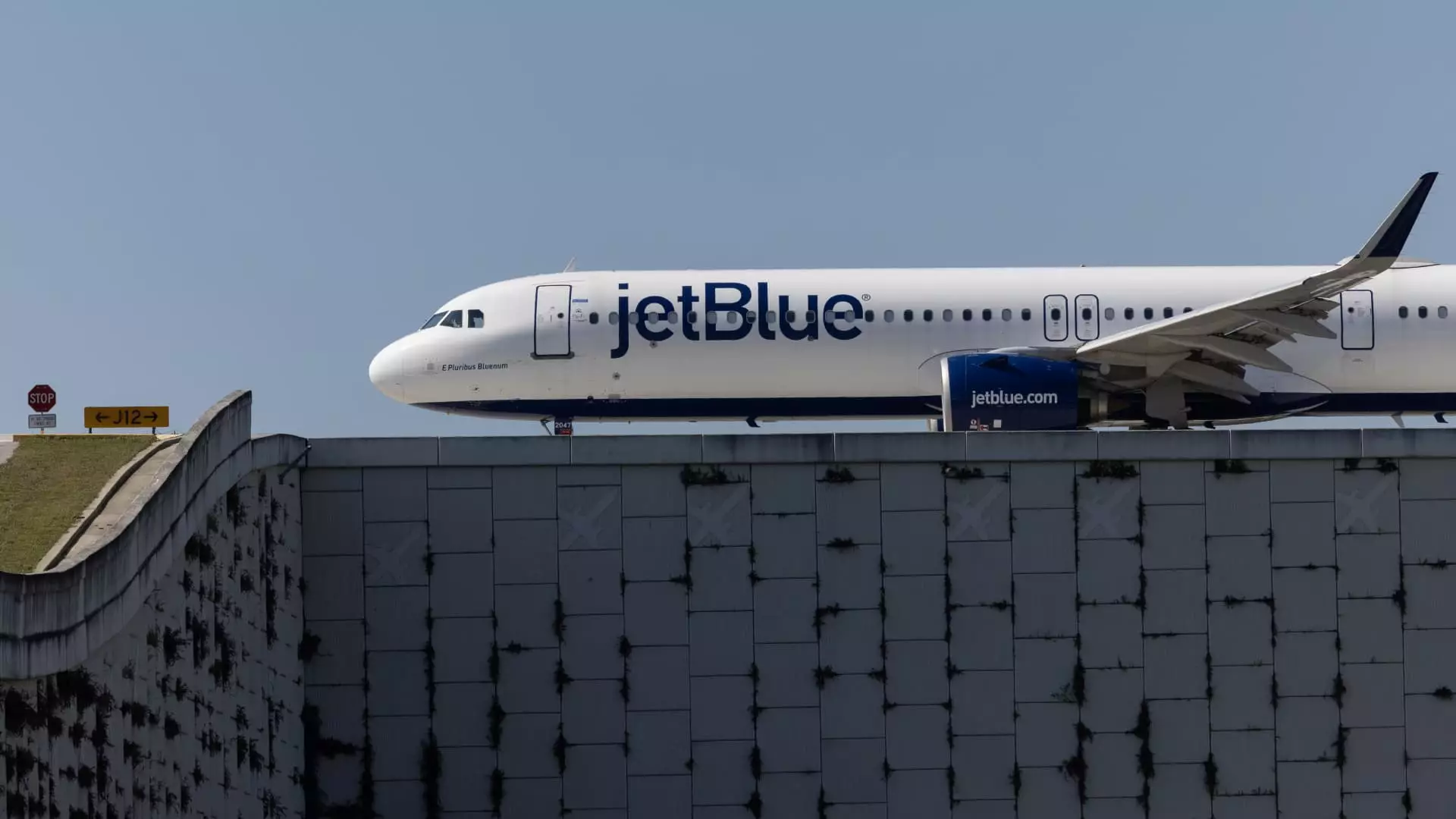JetBlue Airways experienced a staggering decline in its stock price, plummeting over 25% in a single day, marking the airline’s largest loss since becoming publicly traded more than twenty years ago. The sudden drop was primarily driven by the airline’s disappointing forecast regarding its financial outlook, which left investors on edge and questioning the stability of their investment. This dramatic downturn is emblematic of the volatile nature of the airline industry, especially in an environment where competition is fierce and consumer preferences can shift rapidly.
The forecast predicted a rise in unit costs, excluding fuel, by as much as 7% in the current year compared to 2024. This came amidst expectations of a 10% year-over-year increase in the first quarter. Additionally, JetBlue projected that its quarterly revenues could be weak, estimating a possible decrease of up to 0.5% or an increase of only 3.5%. In stark contrast, larger rivals like Delta and United are anticipating stronger revenue growth, emphasizing a concerning trend where JetBlue appears to be losing its competitive edge.
In response to these challenges, JetBlue is implementing a strategic plan aimed at streamlining operations and reducing costs. This involves the elimination of less profitable routes, deferring the acquisition of new aircraft, and increasing revenue by offering higher-priced seats. The airline’s proactive measures are further highlighted by the reported voluntary early retirement packages extended to senior pilots, a move deemed necessary to adjust the workforce in light of current operational needs.
Furthermore, JetBlue has asserted its commitment to cutting costs significantly, having reported a reduction of approximately $190 million over the past year. Although CEO Joanna Geraghty remains optimistic, describing this adjustment as part of a “multiyear strategy,” the long-term focus necessitates patience from stakeholders. The expectation is to increase pretax profits by as much as $900 million by the year 2027. Yet, achieving a stable profitability level hinges on navigating current challenges and effectively ramping up unit revenues.
JetBlue is not only facing internal hurdles but also grappling with external factors that complicate its recovery efforts. A significant issue has arisen due to the Pratt & Whitney engine recall, which is impacting the fleet’s operation. With a number of Airbus jets now grounded—an increase from the 11 planes previously affected—operational capacity is further strained. This recall is anticipated to disrupt service continuity and lead to additional financial burdens, adding to the airline’s struggles to regain its footing.
Moreover, JetBlue’s recent legal setbacks have compounded its woes. The rejection of its acquisition of Spirit Airlines by a federal judge, coupled with a failed regional partnership with American Airlines, has thwarted avenues for growth. These losses not only hinder strategic expansion efforts but also signal the complexities of navigating legal and regulatory obstacles in the airline industry.
Despite JetBlue’s challenges, some analysts maintain an air of cautious optimism. Conor Cunningham from Melius Research noted that while the current management team has managed to meet their financial targets, the stark contrast with the broader airline industry—where competitors are enjoying significant earnings growth—raises concerns. JetBlue’s ability to effectively drive unit revenue will be critical for achieving sustained operating profit, yet this objective seems daunting given the sluggish momentum observed in the first quarter.
Additionally, JetBlue’s recent financial report indicates a narrowing of losses when comparing year-over-year performance, with the fourth-quarter loss decreased to $44 million from a previous $104 million. However, a reported revenue decline of 2.1% from the prior year adds another layer to the already complex financial picture.
JetBlue Airways stands at a crossroads, facing both internal and external pressures that threaten its recovery and competitive positioning in the market. While strategic adjustments and long-term planning are underway, the airline must navigate immediate challenges, ground numerous aircraft, and adapt to an evolving market landscape. The coming quarters will be critical in determining whether JetBlue can stabilize its operations and offset the current turbulence with a clearer flight path toward profitability.

